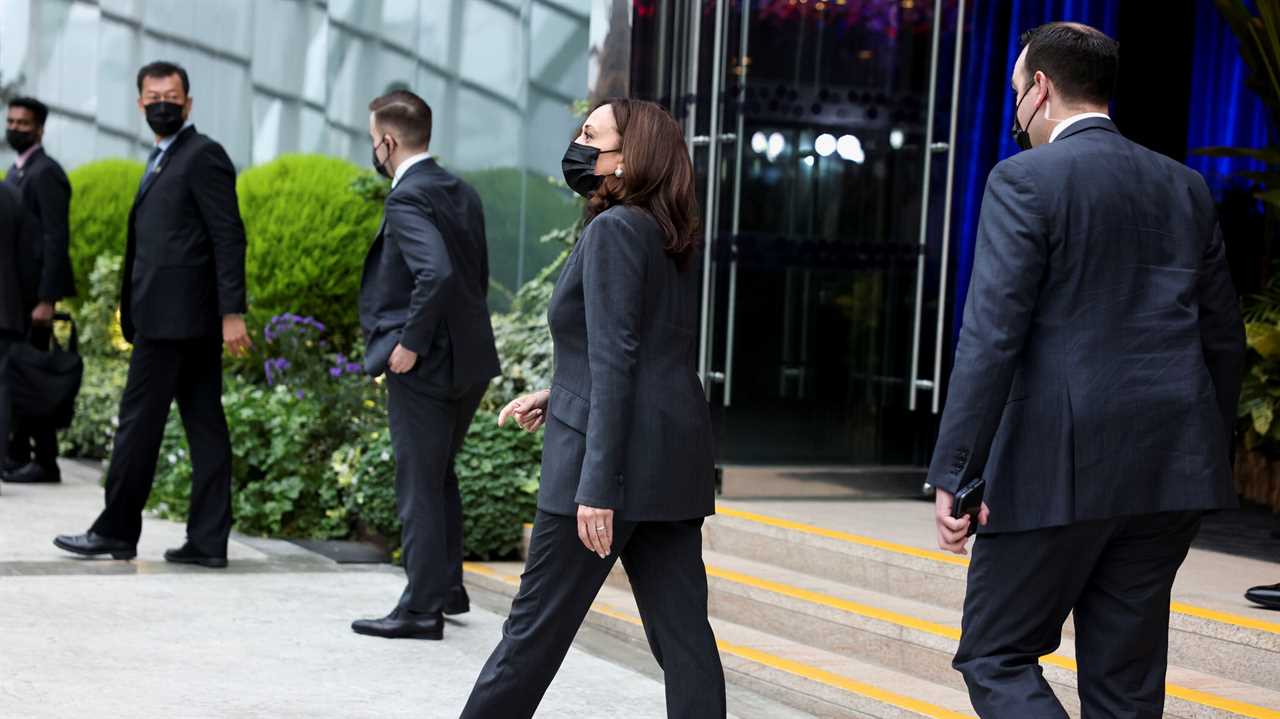
Any solo international trip of the first female vice president of the United States and the country’s first female vice president of color would, in normal circumstances, invite first-degree scrutiny. Not just of her speeches and joint news conferences, but of her ceremonial appearances. Emphasis on the last word.
After all, as a pioneer and one of the rare women helping to lead a country on the world stage (at a time when one of the most famous, Angela Merkel of Germany, is about to step down), every statement and choice she makes carries with it the symbolism of the trailblazer. Her decisions impact not just herself, but those who come after her and will learn from her example.
And yet Kamala Harris’s recent trip to Southeast Asia, which came to an end on Aug. 26, was notable in part because of how much the focus was on what she said and how little extraneous commentary it generated; how little reaction to the theater of the trip (the costumes! the curtain raisers!). Which is, when you think about the formal choreography of such trips, which are a dance between public performance and private policy negotiations, pretty extraordinary.
The Daily Mail was so desperate for content that it tried to drum up angst because of … a smile.
That may suggest that we’re so inured to the idea of a female leader that we have ceased to focus on it at all, a theory that falls into the too-good-to-be-true category. (Making snap judgments based on appearance is a basic part of human nature.) Or it suggests that Ms. Harris consciously and strategically crafted her image to ensure that it could not distract from the duty at hand.
Which is not to say she thought about it any less.
Consider: From the evening of Aug. 20, when she left Washington to fly to Singapore, through her time in Vietnam, she wore only dark pantsuits in navy, gray and black, with a small flag pin on the lapel, plain white or light blue shells beneath and her signature simple strand of pearls.
She wore a dark pantsuit to meet with Prime Minister Lee Hsien Loong of Singapore. A dark pantsuit to the orchid naming ceremony. A dark pantsuit to meet with President Nguyen Xuan Phuc of Vietnam to pay homage at John McCain’s memorial in Hanoi on the third anniversary of his death.
Against the backdrop of the messy evacuation from Afghanistan and the need to reaffirm America’s commitment to its allies, with the Delta variant and other forms of the virus casting a cloud of fear over the world’s efforts to combat the pandemic, her somber wardrobe served to reflect the somber state of the world.
Her choices also helped her blend in: not just with her male peers, who were similarly attired (at a news conference with Prime Minister Lee, she wore a light blue shell that, coincidentally, matched his light blue shirt), but with political tradition as it exists in the shared imagination. After all, dark suits are essentially a synonym for generic world leader uniform, which is why people freak out when a president makes the rare appearance in beige. (Beige! Oh my god! Oh my god!)
In the end, that was the biggest takeaway from the vice president’s stagecraft. More than the fact that within that framework, Ms. Harris also checked the boxes of diplomatic dress, wearing American designers (Prabal Gurung, Altuzarra) and, in line with her mandate to focus on climate change, only clothes she already owned.
Given that Ms. Harris has pointedly veered away from the bled-into-the-background uniform at past moments in the spotlight — when she wore a suffragist white suit on the evening Joe Biden declared victory in the presidential election; a bright purple coat and dress, melding blue and red, at her swearing-in; a cream pantsuit at the State of the Union — it was clearly a tactical choice.
And it was effective from the point of view of a number two who doesn’t want to take the spotlight away from her boss. Or distract from the grim issues of the moment (not to mention demonstrate discipline and an ability to stay resolutely on message). Even if, watching the trip play out, it was hard not to wish that a woman did not have to don generic male camouflage to enact her part.
Clothing can be used to communicate a variety of messages — unity and hope and allyship and resolution — and that is a tool that is most available to women, for obvious reasons. They should not have to sacrifice it to be taken seriously. No one should.
Maybe that will come, legitimizing the opportunity for everyone to use dress (and fashion, let’s say it) to its greatest, most multidimensional extent. For now, Ms. Harris has to walk a fine line between representing her administration and making history. It’s possible she can’t serve both masters. But it would be something to see.






